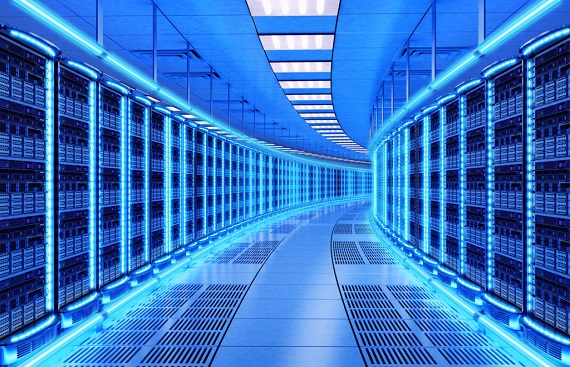Can Geographical Diversification of Datacentres Boost the Power Economy in India?

As IT operations are vital for business succession. A data centre is an industrial-scale operation using as much electricity as a small town. It generally includes backup components and infrastructure for power supply, data communication connections, environmental controls.
A data centre is a dedicated space inside a building that houses computer systems and associated components, such as telecommunications and storage systems. Dynamic infrastructure provides the ability to intelligently, automatically, and securely move workloads within a data centre anytime, anywhere, for migrations, provisioning, to enhance performance or building co-location facilities. As per the data centre network architecture, communications in data centres are often based on networks running the IP protocol suite. Redundancy of the Internet connection is usually provided by using two or more upstream service providers. Some of the servers at the data centre are used for running the essential Internet and intranet services needed by internal users in the organization, e.g., e-mail servers, proxy servers, and DNS servers. Network security elements are also usually deployed: firewalls, VPN gateways, intrusion detection systems, etc.
Data centres need a lot of power, consumed by two main usages: the power required to run the actual equipment and the power expected to cool the equipment. Power efficiency reduces the first category.
Cooling cost cut from natural ways comprises location decisions: When the focus is not near good fibre connectivity, power grid connections, and people-concentrations to manage the equipment, a data centre can be miles away from the users. 'Mass' data centres like Google or Facebook don't need to be near population centres. Arctic locations that can use outside air, which produces cooling, are getting more popular.
Renewable electricity sources are another plus. Thus countries with favourable conditions, such as Canada, Finland, Sweden, Norway, and Switzerland, are attracting cloud computing data centres.
Bitcoin mining is increasingly being seen as a potential way to build data centres at the site of renewable energy production. Curtailed and clipped energy can secure transactions on the Bitcoin blockchain providing another revenue stream to renewable energy producers.
It is tough to reuse the heat which comes from air-cooled data centres. For this reason, data centre infrastructures are more often equipped with heat pumps. An alternative to heat pumps is the adoption of liquid cooling throughout a data centre. Different fluid cooling techniques are mixed and matched to allow a fully liquid-cooled infrastructure that captures all water heat.
Microsoft Executive on Data Centres in Metro Cities: India
Major global cities like Amsterdam and Singapore are shunning new data centres because they "suck out" power. A senior industry official said we need to be cautious about concentrating all the capacities in or around the financial capital. The executive from global tech major Microsoft suggested that rather than focusing on one city like Mumbai or Delhi, or Chennai, there has to be diversification in geographical locations.
"Many of the developed cities, many of the developed countries have actually stopped building datacentres in those cities. Cities like Amsterdam, modern city like Ireland, extremely modern city like Singapore, have almost stopped development of new datacentres in their cities. They are sucking out entire power of that city," Rahul Dhar, country director, data centres, for Microsoft, said at an event organized by industry lobby CII.
He also said the global experience gives something to learn for India and wondered if we have a task force working on the same. "How can we completely decongest a city like Mumbai because it is sucking out the entire power of Mumbai or may be some other city like Chennai or New Delhi?"
It can't be seen until a few years ago, Maharashtra was facing an acute shortage of power, and it was an islanding system that saved its capital Mumbai from the broader woes of the state. Speaking at the same event, Sify Technologies' Kamal Nath said his company set up India's first data centre in the Vashi railway station because of higher assurance of power supply at the site.
At present, over half of the data centre capacity of the country is concentrated in Mumbai, and estimates suggest the same contribution continues even as the industry grows significantly owing to increased digital adoption, executives said.
They attributed the high interest in the financial capital to factors like cable landing, power availability and stability, dense fibre networks, and supportive government policies.
In the last three years, Nath said over half of the overall 240 MW of data centres added nationally have been in Mumbai or around. The overall capacity in Mumbai presently stands at 200 MW and is expected to more than double to 410 MW by 2023, he said, pointing out that the stretch from Airoli to Mahape in Navi Mumbai is a hub.
He also announced a slew of expansion plans his own company is undertaking to increase capacities without disclosing the investments.
Speaking at the same event, Maharashtra's industries minister Subhash Desai welcomed the interest shown by the industry and committed the state's support.
He said another 200 acres in Navi Mumbai is the first step for growing the data centre business and spoke about committing space near Pune and Nagpur for such facilities. He also said that the MIDC could acquire even small tracts of land of up to 10 acres for datacentres by invoking "statutory" provisions so that the industry gets un-encumbered land.
The state will do more once its new policy on information technology and information technology-enabled services comes in. The MIDC expects a government resolution on the same in the next month.
